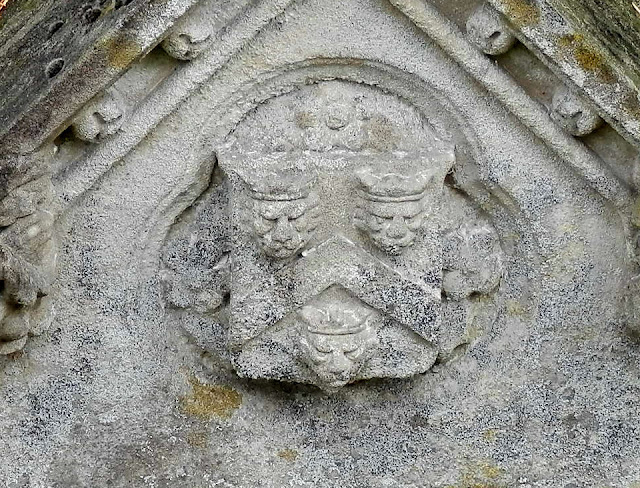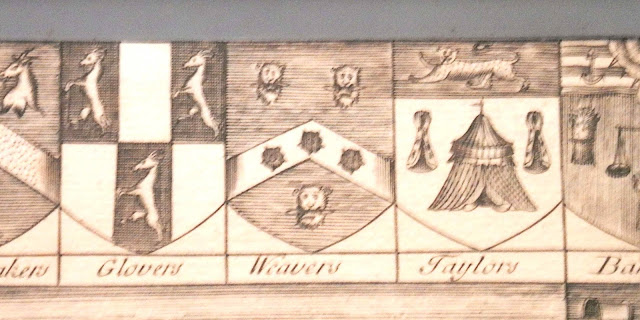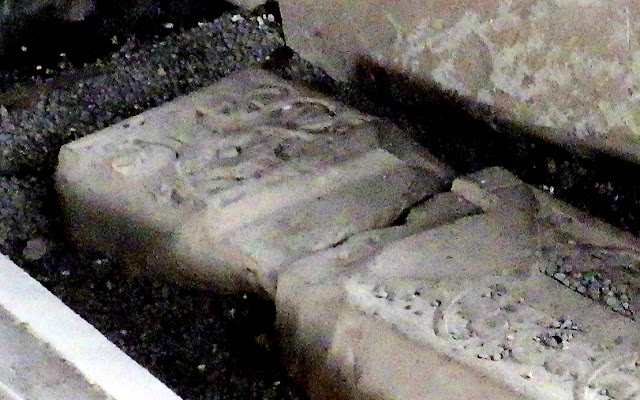Over the years organisations change their logos - a way to adapt to modern times or just as a way to refresh a look.
The Shropshire Women's Institute did just that.
The faces are passive, but the colours of blue and amber follow the tradition.
The 'ermine spots' - the decorations that resemble a topiary bush - are unusual in shape, but not completely outside the tradition.
('Erminois' is a heraldic device, meant to resemble the kind of prestigious ermine fur used by the peerage, which features dark spots).
 Meanwhile, the current version (right) is a much more cuddly one! With age, the organisation has clearly mellowed, and taken a softer approach.
Meanwhile, the current version (right) is a much more cuddly one! With age, the organisation has clearly mellowed, and taken a softer approach.
The leopards are more like puzzled kittens now and the amber colouring has toned down to a yellow.
What are really different are the ermine spots, which are not in the usual shape, but rather resemble Christmas trees... Admittedly, ermine spots have continued to change over the years, but these are new to us...
+
To comment on this post, just use the Comments field down this page or email us direct.
To
get an email alert into your inbox every time we make a new post (about
once a week), just click 'Subscribe & Follow' (at the top of the
column to the right on this page) and just fill in the form













